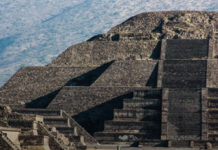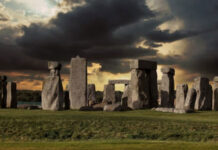
The giants’ bones measure up to 1.90 meters (6.2 ft), which may seem like an exaggeration for the average height nowadays, but it makes sense if we take into account the average height of the Chinese people of that period.
“These measurements are based on the structure of the skeleton. If we could see this person alive, they would definitely be taller than that,” explained Fang Hui, president of Shandong University’s School of History and Culture.
This discovery adds unprecedented aspects to research that, since 2016, has been organizing excavations in the ruins of the village of Jiaojia.
Thousands of years ago, the Longshan culture, located in the lower and middle Yellow River, had its political, economic and cultural center in what is now Shandong, and it is now known that the height of its inhabitants was atypical for the continent’s average in Stone Age.
The novelty, however, is not an isolated and completely unknown fact. Natives of the region, for example, have an average height slightly higher than the national average. In 2015, 18-year-old men were 1.75 meters tall, while most Chinese men are around 1.70 meters tall.

Furthermore, unscientific evidence gained credibility: rumors said that the philosopher Confucius, who lived between 552 and 479 BC in Shandong, was more than 1.90 meters tall.
More discoveries about the Longshan
For twelve months, Chinese experts excavated the remains of more than 100 houses, 200 tombs and around 20 wells located in the town of Jiaojia, in the city of Jinan, capital of Shandong.
The ancient relics excavated by archaeologists belong to a late Neolithic civilization located near the lower reaches of the Yellow River.

“They were already farmers at the time, people had diverse and rich food resources, and therefore their physique changed,” says Hui.
The Jiaojia archaeological site revealed that the population that lived in eastern China was already sedentary: they practiced agriculture, had access to a nutrient-rich diet and managed to develop very well physically.
Another important aspect of their economic life was pig farming and even pig teeth and other bones were found in some graves.
“Studies and excavations of the site are very important so that we can understand the origin of the culture of this region”, declared the head of the province’s Department of Cultural Heritage about the giants.


















